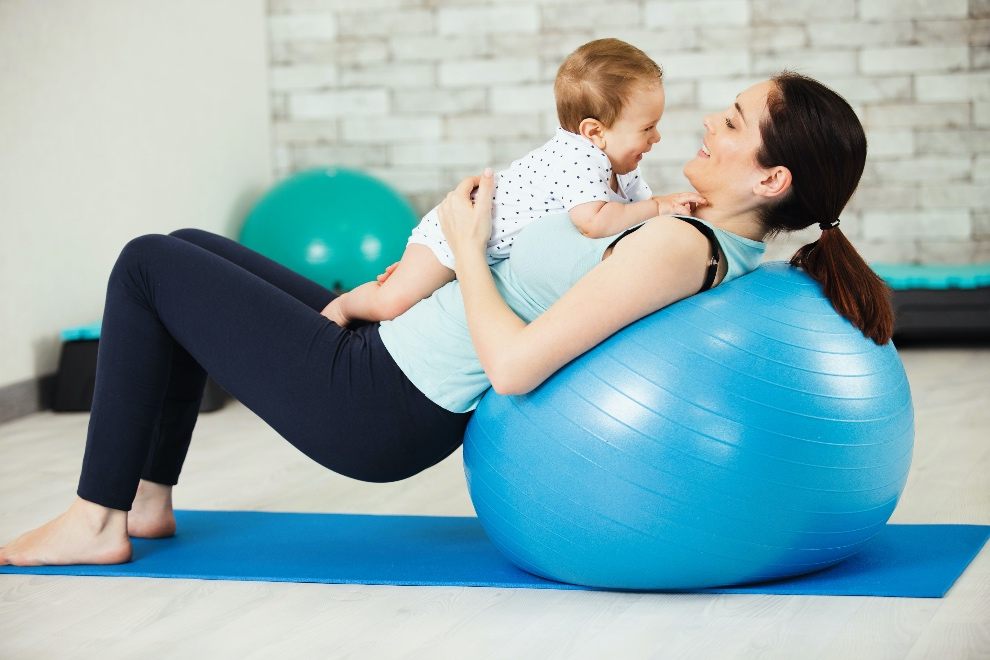
Five Tips For Optimal Postpartum Pelvic Floor Health
After many months of pregnancy, welcoming your new arrival into the world can be a joyous and exciting moment. However, there are also various physical changes taking place, which are discussed far less often and take time getting used to. Following pregnancy and childbirth, the pelvic floor undergoes significant changes, and to promote recovery, it’s vital to prioritize postpartum pelvic floor health. Read on to discover practical tips aimed at supporting pelvic floor health following delivery.
What is the pelvic floor?
The pelvic floor is a vital but often overlooked part of the human body, playing a significant role in maintaining various bodily functions. Located at the base of the pelvis, this intricate network of muscles, ligaments, and connective tissues provides essential support for the pelvic organs, including the bladder, uterus (in females), and rectum.
One of the primary functions of the pelvic floor is to help control bowel and bladder functions. The muscles in this area work together to ensure proper continence, preventing involuntary leakage from the bladder or rectum. During pregnancy, however, the pelvic floor takes on additional roles, undergoing significant changes to accommodate the growing baby. Then, childbirth places additional stress on these muscles. That’s why it’s important to prioritize postpartum pelvic floor health.

- Pelvic floor exercises
The importance of postpartum pelvic floor exercises, sometimes referred to as Kegels, cannot be underestimated in the weeks and months following childbirth. After up to nine months of pregnancy along with the physical strain of the delivery itself, the postpartum period is the time to give dedicated attention to strengthening your pelvic floor. This ensures optimal recovery and long-term well-being, preventing unwanted problems such as pelvic prolapse and urinary incontinence, among other things.
While many people understand the theoretical importance of pelvic floor exercises (let’s face it, that chapter in the pregnancy book is not as appealing as some of the others!), finding the most effective and comfortable ways of performing them can pose a challenge. To start with, finding out the best way to activate the right muscles is not always obvious.
If you’re unsure, begin by lying down in a comfortable position, free from distractions. Then, take time to consciously relax all the muscles in your abdomen, thigh area, and buttocks. When they are all free from tension and you feel relaxed, squeeze the muscles in your pelvis in the same way as if you were trying to stem the flow of urine. Repeat this several times, relaxing the muscles in between. This can feel quite uncomfortable for many women, which is why a pelvic floor trainer (such as this one with biofeedback) can make the process easier.
- Consider your posture
It may come as a surprise, but maintaining proper posture postpartum is paramount for optimal pelvic floor health during the recovery period. While the instinct to slouch or hunch over may be strong, especially when you’re breastfeeding, cradling your little one, and feeling exhausted by the enormous changes brought about by motherhood, it's important to try and resist these tendencies.
Poor posture can result in undue pressure on the pelvic floor muscles, which in turn can impact their recovery. By consciously adopting an upright and aligned posture, it’s possible to support pelvic floor recovery. What’s more, focusing on posture can inadvertently have a positive impact on your overall confidence and mindset, so it’s a win for both your physical and mental health.
- Return to exercise gradually
If you enjoyed exercising before having a baby, it’s more than likely that you’ll be keen to get back to sports and fitness again. The benefits to our overall well-being are obvious, but it’s a good idea to think carefully about the types of exercise you carry out, especially to start with. High-impact activities, particularly running or lifting weights, put unnecessary strain on the pelvic floor. What’s more, during pregnancy, the pelvic ligaments undergo significant changes to accommodate the baby and enable childbirth. They are softened and loosened thanks to the release of a hormone called Relaxin, which plays a crucial role in allowing the pelvic bones to adjust so they can accommodate the expanding uterus.

This could impact your postpartum exercise choices because Relaxin makes the pelvic joints temporarily more flexible – and therefore less stable. To minimize stress on the pelvic region, go for light exercises such as walking or swimming – and leave the weights and running for a couple more months. If you’re unsure, it’s never a bad idea to contact a physical therapist for additional advice.
- Prioritize fiber
Having a new baby can make it easy to slip into a routine of less-than-ideal food choices, grabbing a bite to eat whenever the baby allows. However, the days and weeks after childbirth can result in constipation partly due to changes in progesterone levels, as well as the direct effect of the labor itself.
That’s why getting adequate fiber is more important than ever, as it promotes bowel regularity and helps reduce the need to strain when going to the toilet. Go for wholegrains, plenty of fruit and vegetables, and add in nuts, or legumes like lentils or chickpeas if things aren’t going to plan. Adding in high-fiber snacks to keep your energy levels topped up can also be a great way to avoid reaching for high-sugar, low-nutrition choices when you feel that all-too-familiar slump.
- Stay hydrated
Further to increasing your fiber intake, it’s also important to pay close attention to fluid intake – particularly if you’re breastfeeding your baby. Dehydration quickly results in the need to strain during bowel movements, which exacerbates existing pelvic floor problems and hinders postpartum recovery. What’s more, adequate hydration is essential for maintaining the elasticity of the connective tissues within the pelvic floor. Invest in a couple of refillable water bottles to have on hand at all times, and if you’re breastfeeding, try to make sure you have a drink each time you feed your baby to keep well-hydrated.
Giving birth is one of the most emotionally charged and physically impactful experiences in a woman's life. Beyond the immediate needs of the newborn, postpartum care involves considerations for the mother's physical recovery, with a specific focus on pelvic floor health. Recognizing the importance of addressing pelvic floor issues can contribute significantly to the overall well-being of mothers after giving birth and, by following our top tips, it doesn’t have to be something else to add to that never-ending to-do list!

















